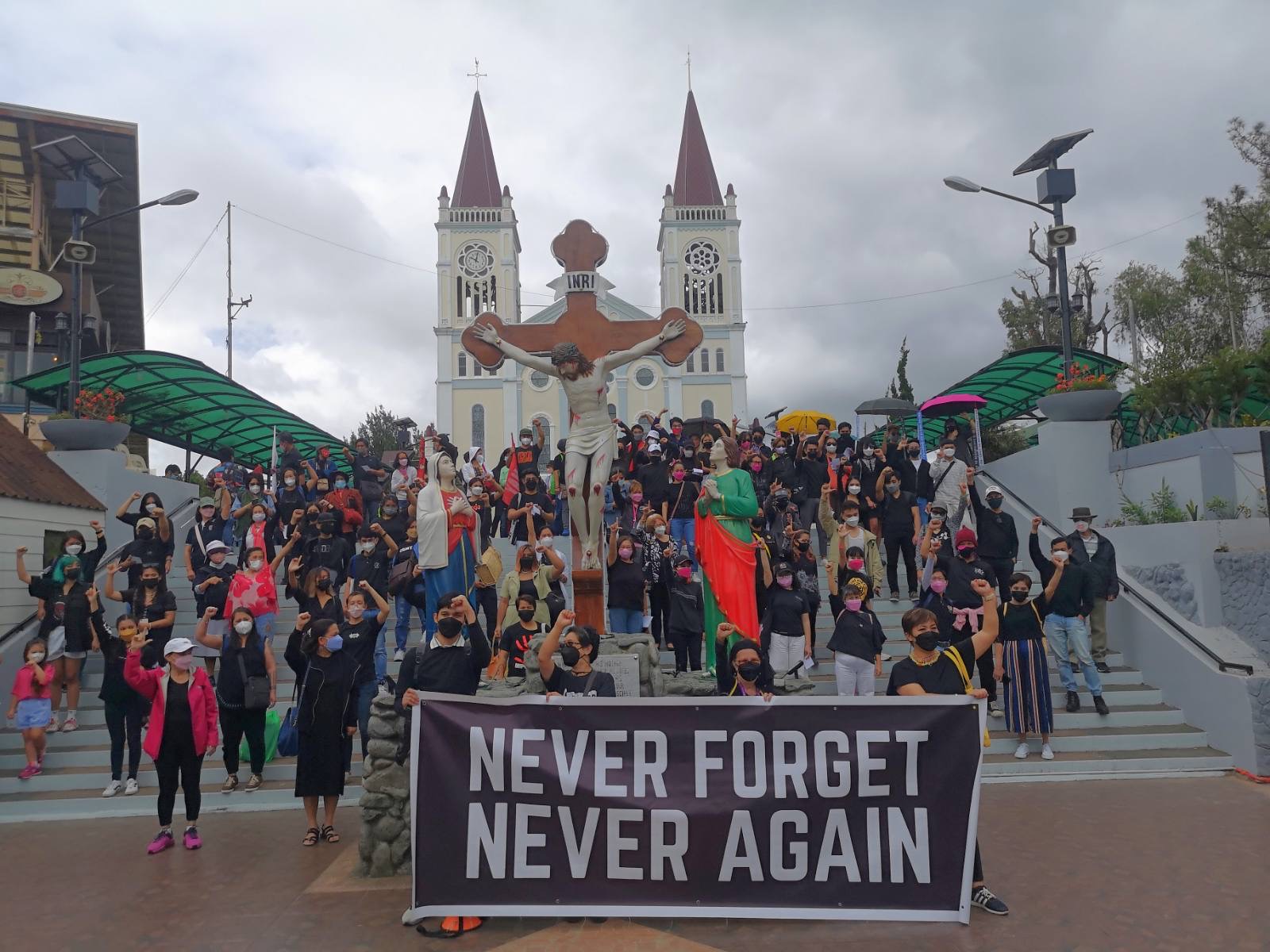‘People power’ up north: Teach our young about the past

STILL FIGHTING About a hundred people on Friday marched down Session Road after attending Mass at the Baguio Cathedral where residents staged their own “people power” movement to protect rebel soldiers 36 years ago. —EV ESPIRITU
BAGUIO CITY—Young activists, some of whom were not yet born in 1986, walked down Session Road with their much older counterparts on Friday to commemorate the day this city staged its own “people power” movement at the Baguio Cathedral.
Carrying red flags, about 100 people reenacted the parade staged 36 years ago by ordinary citizens, nuns and priests, and civic leaders here when news erupted that the late dictator Ferdinand Marcos had fled the country.
At that time, disparate groups of people spent a whole day camped out at the cathedral, since renamed Our Lady of Atonement Cathedral, to protect a group of soldiers who defected to the side of rebels led by then Armed Forces of the Philippines vice chief of staff Gen. Fidel Ramos and then Defense Minister Juan Ponce Enrile instead of joining an augmentation force from northern Luzon sent to Metro Manila to protect Malacañang.
Mayor Benjamin Magalong, who joined the marchers at Malcolm Square, recalled he was one of the soldiers who sought sanctuary at the cathedral.
The retired police general was then a junior officer who graduated from the Philippine Military Academy in 1982 when he and other soldiers declared support for Ramos after acknowledging the abuses of martial law.
Article continues after this advertisementMagalong said they were returning from combat duty battling communist rebels in Benguet province when they proceeded to Baguio to make a statement against Marcos but found themselves “being protected by the people,” unlike their experience with interior Cordillera towns where soldiers were feared and hated.
Article continues after this advertisementAmong the people who shielded them were hard-line militants, who wore red shirts and who are now being Red-tagged by the military.
‘We quickly forget’
“We quickly forget,” said Fr. Marlon Urmaza when he led the People Power Revolution’s commemoration Mass at the cathedral.
Like old World War II stories shared by Filipino grandparents that are played down with each retelling, the young generation may no longer find relevance in abridged and false accounts about the bloodless revolution, he warned in his homily.
“We will move in circles if we fail to learn the lessons of the past … Teach our young [about the people power movement] and teach them well,” the priest said.
Urmaza said he was 8 years old when television broadcasts showed thousands of people converging at Edsa to protect the rebel soldiers in an act of civil disobedience because of cheating at the snap presidential elections, which saw Marcos winning over Corazon Aquino, the widow of opposition Sen. Benigno “Ninoy” Aquino.
It was the killing of Ninoy upon return from exile on Aug. 21, 1983, that sparked the public outrage that culminated in the Feb. 22-25, 1986, peaceful revolution that ousted Marcos from power.
One of the priest’s most vivid memories about that event was confetti raining down on Session Road from Army helicopters on Feb. 25 while people chanted “Laban, laban (fight, fight)” and the ubiquitous line, “Tama na! Sobra na! Palitan na! (Enough! It is too much! Bring about change!)”
The priest said he was bothered by an online question, “Will this be the last celebration of the people power?”
Although he did not name the former president’s son who is running for president, Urmaza acknowledged that it would be difficult to celebrate the moments that led “to the downfall of his family.”
Magalong, who shared the same concern, told the marchers: “Our goal was to restore democracy but did we achieve it? People forget what they learned too quickly.” —VINCENT CABREZA and KIMBERLIE QUITASOL